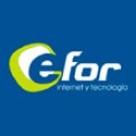From Santander to Oslo: Intelligent cities and the internet of things
Thanks to IoT we can find out which means of transport are the most frequently used, which streets travel most frequently, in which time zones, etc... Knowing these data, you can address and mitigate one of the major problems of large cities, traffic, and even, based on these data, draw up an action plan to reduce accidents.
In the metro of any city, thanks to a simple mechanism such as the lathe (which in this case is the connected object), data can be collected on the date and time of entry and exit of users. This information, treated with Big Data techniques, can be used to optimize train schedules and improve service.
Information signs, escalators, lifts, camera systems, etc. are other connected objects that receive and send real-time information on the operation of a metro network.
Taxis and buses also use IoT to collect information about their position and occupation, which is then processed to provide better services.
In all this process the anonymity of the data is key, that is to say, the object must give us information on the hour of entry of a user but never on his personal information like DNI or age. The routes also remain anonymous and we cannot know the point of departure and descent of a single season ticket over time.
To explain the use of IoT in this area and with a 360º vision, let's use the example of Oslo: the Norwegian city has installed an intelligent lighting system, applied in 55,000 lanterns that turn on and off and vary the intensity of light depending on different factors such as weather conditions, moon and solar luminosity or the influx of pedestrians on the streets, all in an intelligent and autonomous way. Thanks to this system, Oslo has achieved energy savings of up to 62%.
Another objective is to cut carbon dioxide emissions by 50% by 2020 by redesigning the entire transport network and banning private cars.
Much closer, we have the example of Santander, the capital of Cantabria uses IoT technology since 2010 and shows that small cities have greater technological potential and willingness to improve.
On average, each vehicle spends 96 hours a year parking, which means more than 200 million hours of vehicles on the road with the aim of stopping. Santander's solution consisted of ferromagnetic sensors that are installed under the asphalt to indicate to the user by means of visual signals where there is a free place to stop his vehicle.
The Internet of Things is based fundamentally on the data obtained thanks to the Big Data, this information allows us to anticipate to some needs of the citizens.
A very simple example are the canopies that indicate the waiting time for the next bus, however, the applications of IoT in this field are of a wide variety: they can go from QR codes installed at points of interest in the city with tourist information (as has been done in Santander) to applications to fight tax fraud, as is the case of the drone pilot program launched by the Treasury in 2016 to locate real estate that have not taxed correctly.
If there is one thing that worries city councils, it is the amount of waste and rubbish generated by their city. If not to reduce it, the Internet of Things can help us a lot in a more effective management, for example, of the fleet of waste removal trucks according to the data returned by the filling sensors of the tanks.
In cities like Shanghai this technology has gone beyond management, and the sensors installed in the containers detect the type of waste deposited informing whether it is suitable or not.
Once the fields of action have been chosen, each municipality or public administration must choose the IoT solution that best suits its needs according to the number of inhabitants, size, geographical characteristics, demographic situation, etc. of its city.
Fountains:
This is how IoT allows intelligent cities to be possible
Internet Trends of Things in Smart Cities
Six great ideas a smart city needs

